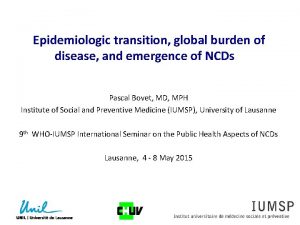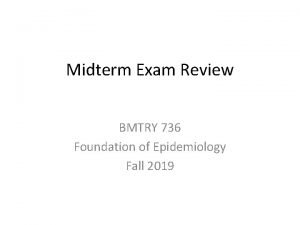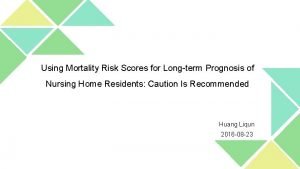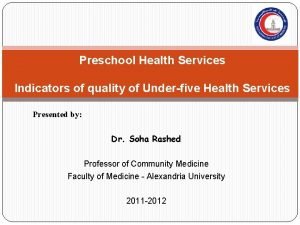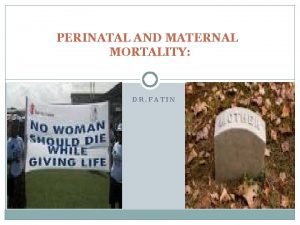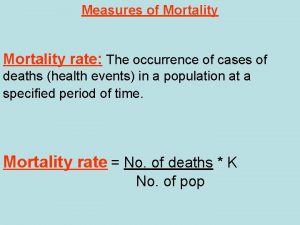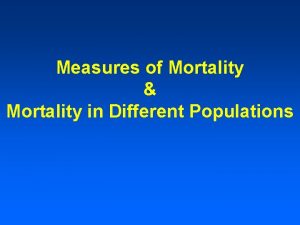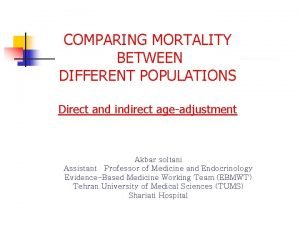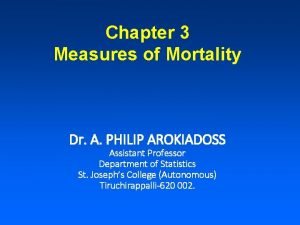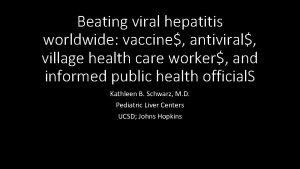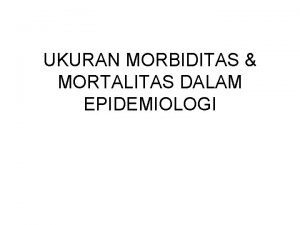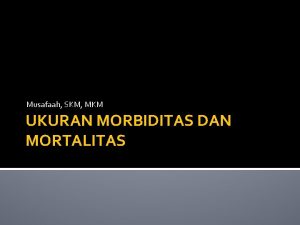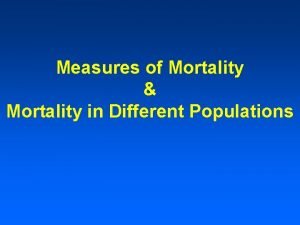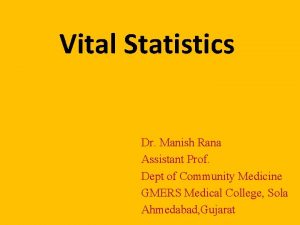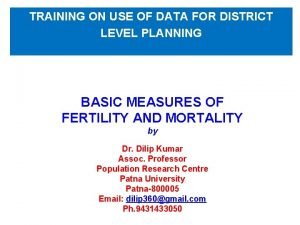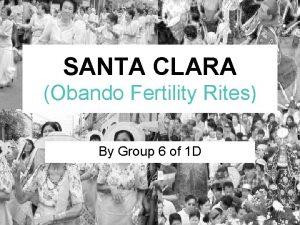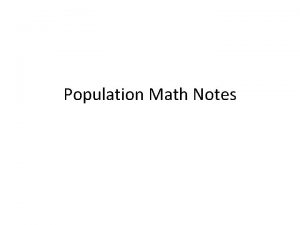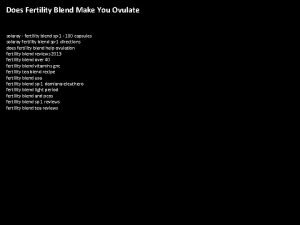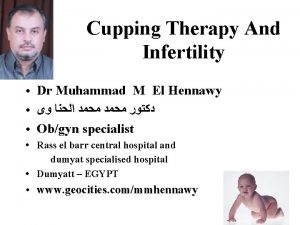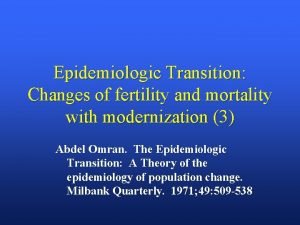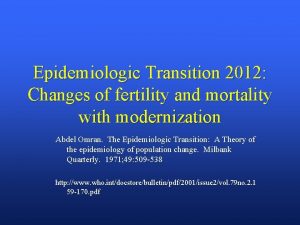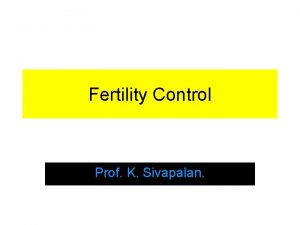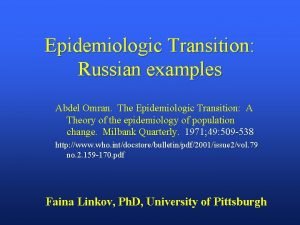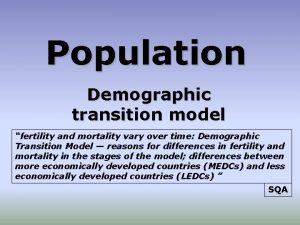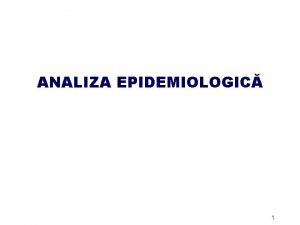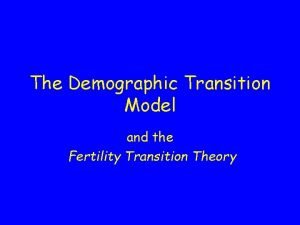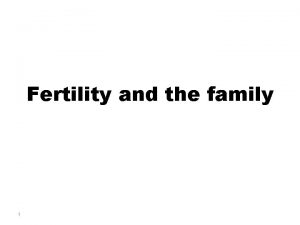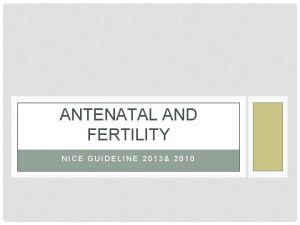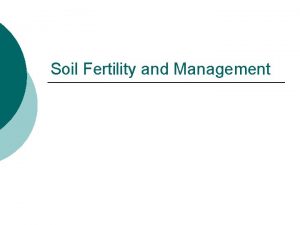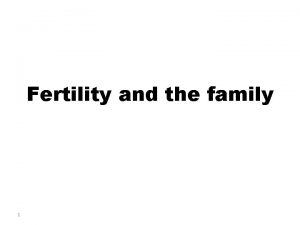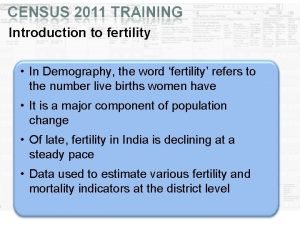Epidemiologic Transition Changes of fertility and mortality with




































- Slides: 36

Epidemiologic Transition: Changes of fertility and mortality with modernization Abdel Omran The Epidemiologic Transition: A Theory of the epidemiology of population change. Milbank Quarterly. 1971; 49: 509 -538

Abdel Omran Evolution of Disease Charles Darwin Evolution of Species

The New NCD Epidemiology and Prevention v v Systems approach Disease Monitoring Telecommunications Backbone Deming approaches to Prevention


Epidemiology v v v Psychiatric Epidemiologists Diabetes Epidemiology Cardiovascular Epidemiology Cancer Epidemiology Infectious Disease Epidemiology

Instead at looking at individual diseases, we need to look at the patterns of diseases

Mortality is the fundamental factor in the dynamics of population growth and causes of death. Mortality has no fixed upper limits. Thus if fertility approached its upper maximum, depopulation would still occur.

During the epidemiologic transition, a long-term shift occurs in mortality and disease patterns whereby pandemics of infection are replaced by degenerative and man-made diseases. . .

Age of Pestilence and Famine Characterized by high mortality rates, wide swings in the mortality rate, little population growth and very low life expectancy

Age of Receding Pandemics Epidemics become less frequent, infectious diseases in general become less frequent, a slow rise in degenerative diseases begin to appear

The shifts in disease patterns in the 19 th century were primarily related to changing SES. With the 20 th Century more related with disease control activities independent of SES: e. g. Mexico, China

Stages of the Epidemiologic Transition v v v Pestilence and Famine Receding Pandemics Degenerative and man-made diseases







Epidemiologic Transition in Developing and Developed Countries


14 years 35 years





Increasing Life Expectancy and Causes of Death 100 Other 80 60 Violence CHD 40 20 CA Infection 0 40 44 48 52 56 60 64 68 Population Life Expectancy 72 76










 Epidemiologic transition
Epidemiologic transition Epidemiologic transition
Epidemiologic transition Epidemiologic transition
Epidemiologic transition An epidemiologic survey of roller skating injuries
An epidemiologic survey of roller skating injuries Professor eyal shahar
Professor eyal shahar Epidemiologic triangle
Epidemiologic triangle Elizabeth mulroney
Elizabeth mulroney Chemical physical change examples
Chemical physical change examples Mortality vs morbidity
Mortality vs morbidity Flacker mortality score
Flacker mortality score The great gatsby theme
The great gatsby theme Disease specific mortality rate formula
Disease specific mortality rate formula Equations
Equations Perinatal mortality rate
Perinatal mortality rate Sex specific mortality rate
Sex specific mortality rate Death rate formula
Death rate formula Age adjusted mortality rate definition
Age adjusted mortality rate definition Age adjusted mortality rate
Age adjusted mortality rate Attributable mortality
Attributable mortality Prevalence rate formula
Prevalence rate formula Continuous mortality investigation
Continuous mortality investigation Ukuran morbiditas
Ukuran morbiditas Infant mortality rate formula
Infant mortality rate formula Mystery and morality plays
Mystery and morality plays Infant mortality rate formula
Infant mortality rate formula Crude death rate adalah
Crude death rate adalah Death rate formula
Death rate formula Health continuum pdhpe
Health continuum pdhpe Nir ap human geography
Nir ap human geography Asmfr
Asmfr General fertility rate
General fertility rate Obando fertility rate
Obando fertility rate Population density formula
Population density formula Contoh perhitungan tfr
Contoh perhitungan tfr Gnc male fertility blend reviews
Gnc male fertility blend reviews How to calculate tfr
How to calculate tfr Cupping therapy for fertility
Cupping therapy for fertility


